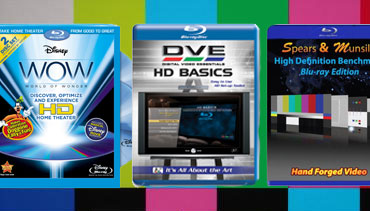How To: Calibrate Your HDTV Page 2

Getting the Right Calibration Disc
Trying to improve your TV’s picture by simply messing around with the controls is like trying to do an appendectomy by simply messing around with a scalpel: You’re almost certain to do more harm than good. Fortunately, the tools you need to properly adjust your TV’s controls are simple: a Blu-ray Disc player and a setup disc. We’ll assume you already have the player, so let’s find you a disc. At press time, there were three commercially available Blu-ray TV setup discs: Digital Video Essentials: HD Basics, Spears & Munsil High-Definition Benchmark Blu-ray Edition, and Disney’s WOW: World of Wonder. Prices for these discs vary, but each sells for about $25-$30. Trust me: It’ll be the best $25-$30 you ever spent on your home theater.
Of the three, WOW is, not surprisingly, the disc most intended for consumers; it’s packed with clear, useful tutorials and includes a helpful printed manual. Spears & Munsil has tutorials, but it’s aimed more at enthusiasts who already have some inkling of what they’re doing, and Digital Video Essentials seems targeted more at professional technicians. That’s not to say Spears & Munsil and WOW are watered-down Calibration for Dummies productions (notwithstanding the eminently skippable primers in WOW, which are punctuated by “wacky” comments from the formerly lovable Goofy). On the contrary, all three discs have enough test patterns for basic setup, and I find certain of the innovative test patterns on WOW and Spears & Munsil more useful than some of the more traditional patterns on DVE. Spears & Munsil is, in my opinion, the quickest and easiest to navigate, followed by DVE, with WOW running third.
What Digital Video Essentials has that the others don’t are the “window” test patterns needed to calibrate a TV’s grayscale — in other words, to adjust the TV so that it delivers consistent color reproduction from the darkest areas of the picture to the lightest. Most TVs and projectors now offer easily accessible controls for fine-tuning grayscale reproduction; they’re usually labeled Gain and Bias, and there’s usually one each for red, green, and blue. But to calibrate a TV’s grayscale, you need a colorimeter, an instrument that measures color temperature — the color of white, gray, and black in kelvins. While there are a few low-cost colorimeters out there, the really accurate ones used by pros (including the reviewers at Sound+Vision) cost several thousand dollars.




























































